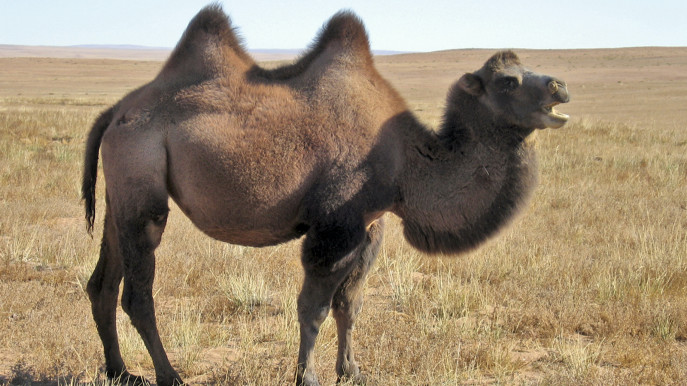The Bactrian Camels of Ladakh
From the ancient region of Bactria, there comes a camel defying the imagination of many
We have often heard stories about the Arabian or dromedary camels during our childhood. We are also accustomed to seeing pictures of these animals in books and television. But there are some extraordinary camels out in the wild that we rarely set our eyes upon.
Name and origin
The Bactrian camel (Camelus bactrianus) lives only in Asia, specifically in the Gobi Desert of northwest China and Mongolia. These camels have two humps rather than one like their Arabian brothers.
In the IUCN (International Union for Conservation of Nature) Red List, this species is listed as Critically Endangered.
The Bactrian camel is found in very small numbers in some of the remotest areas of Mongolia, China, Pakistan, India, and Central Asian countries.
Their name originates from the Hindu Kush Mountain range, rooted in the historical ancient site of Bactria on the banks of the river Amu Daria. This region is now divided into Afghanistan, Tajikistan and Uzbekistan.
The camel is special
The Pushkar fair in Rajasthan, India, is very famous for camels. Each year, thousands of tourists fly to Pushkar to see the desert camels.
But there you will not find a single of these double-humped giants. You have to travel to the Nubra Valley, a remote area of Ladakh, India, 1,500 km away from Rajasthan, which is the nearest place from Bangladesh to experience the Bactrian camel.

Wild vs domesticated form
Wild Bactrian camels are different from the domesticated form. The wild population descended from a different ancestor while the wild line of the domesticated form is lost today.
Today's wild Bactrian camels face many threats. The main threat is illegal hunting to meet the demand for bushmeat. In the Gobi Reserve Area, Mongolia, 25 to 30 camels are reportedly poached every year. Hunters kill the camels by laying landmines in the saltwater springs where the animals drink.
Other threats include scarcity of access to water, attacks by wolves and hybridisation with domestic Bactrians, leading to a risk of loss of the genetically distinct populations or the prevalence of infertile individuals.
This could potentially create an unavailability of viable bulls for a large number of females during their lifetimes.
Toxic effluent releases from illegal mining, re-designation of wildlife areas as industrial zones and sharing grazing areas with domestic animals also serve as threats.
Due to increasing human populations, wild camels that migrate in search of grazing land may compete for food and water sources with introduced domestic stock and they sometimes end up being shot by farmers.
The only extant predators that regularly target wild Bactrian camels are gray wolves, which have been seen to pursue the weaker and weather-beaten camels as they try to reach oases.
Due to increasingly dry conditions in the species' range, the number of cases of wolf predation on wild camels at oases has increased.
Where to see one
Ladakh, a cold desert in India, is home to the domesticated form of the Bactrian camels. Many endangered species of wildlife can be found in these thousands of miles of apparent nothingness.
The Himalayan yak, the mountain goat, the wild donkey or kiang can be seen roaming the roads. If you are lucky enough, you can meet the Himalayan wolves, the brown bear or the snow leopard.
This area of the Himalayas bordering India and China is very popular among tourists for its exquisite beauty and nowhere-to-be-found wildlife.
However, it is difficult for everyone to go there due to various reasons, including lack of transportation system, high altitude and hostile weather. Mongolian camels are found only in this part of India.
Although mainly used for carrying goods and completing other daily activities, the Nubra Valley is popular among tourists for Bactrian camel safari.

A drafting beast
One feature of the Bactrian camel is that they can survive in remote weather from -40°C in winter to +40°C in summer. They can survive without water for up to 72 hours continuously.
This is why the Indian Army still uses these camels to patrol remote areas of the Himalayas, despite having the current state-of-the-art military facilities.
Tests have shown that at a height of 18,000 feet in the Himalayas, with a weight of 180 kg, this camel can move effortlessly, which is impossible for a drafting donkey.
Many people do not go to the Nubra Valley when visiting Ladakh because there is nothing to see there except this camel safari.
But Mongolian camel sightings are essential for nature and wildlife lovers. They have been an integral part of Mongolian life since ancient times.
You will instantly fall in love with this calm, sociable, and at the same time, shy animal.
 Keep updated, follow The Business Standard's Google news channel
Keep updated, follow The Business Standard's Google news channel
















